My brother-in-law brought me a pork knuckle last week, perfect for making braised pork knuckles to celebrate Chinese New Year!
So why he gave me the pork knuckle? Because pork knuckles represent prosperity and good luck for the coming year.
Today I will show you a Chinese New Year pork knuckle recipe. For readers who have been following me all these years, you might have tried my Chinese New Year pork knuckle recipe, which I published last Chinese New Year. It is cooked in Cantonese style with dry shiitake mushrooms and black moss.
Today I will do something different with another set of ingredients and seasonings. This recipe will include some Sichuan peppercorns, chili peppers, and a different set of spices.
Let’s get into the details right now.

Note: This post may contain affiliate links. Please read my privacy policy for more info. I may receive commissions for purchases made through links in this post. As an Amazon Associate, I earn from qualifying purchases.
The meaning of this dish
This Chinese New Year braised pork knuckle dish is called 橫財就手 in Chinese. The first two words mean windfall or unexpected wealth. The last two words mean it is readily available on hand.
It is used as a metaphor for good luck and prosperity in general.
That means we made this dish hoping that everyone would suddenly get a lot of money, have good luck, win the lottery, inherit large sums of money from their parents, or suddenly have a promotion in the company!
How to prepare the braised pork knuckle
I prepare the braised pork knuckle for Chinese New Year because it signifies good luck and prosperity. However, it is also a dish for any day of the year. In that case, you can use other cuts of meat. For example, you can use pork shanks or other less fatty cards for health reasons.
The first step in the preparation process is to blanch the pork knuckles. Blanching is an effective way to remove any unwanted porky smell.
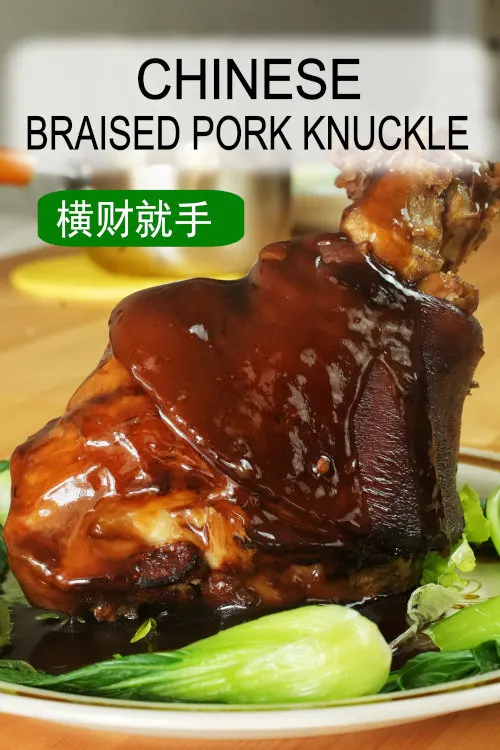
1. Blanch the pork knuckle
- Clean the pork knuckle with plenty of water to remove debris and blood.
- Next, take a closer look at the pork knuckle. If you spot any hairs on the pork skin, remove them with a tweezer or burn them away with a blowtorch.
- After that, put the pork in a large pot and fill it with water enough to submerge it.
- Add some ginger, spring onions, and rice wine to the water. These ingredients help to remove any unwanted smell of the pork. You can refer to the recipe below for the exact amount I use.
- Bring the water to a boil. Then blanch the pork knuckle for about 5-7 minutes and turn it over occasionally.
- Remove it from the water and clean it again with running water. Now it is treated and clean.
2. Fry the pork knuckle before braising it
The next step is to fry the pork knuckle.
You may wonder why I fried the pork knuckle since this is a braise pork knuckle recipe.
Braising will make the pork knuckle tender and soft. However, it will not create the aroma as we fry it. Therefore, it is the best practice to fry the pork knuckle first, then only transfer it to a pot to braise it.
Here are the steps:
- Place the pork knuckle on a large plate. Then add a large tablespoon of dark soy sauce and rub it all over the surface. Dark soy sauce has two functions. First, it provides a nice dark brown color to the pork knuckle. Secondly, the sugar inside the dark soy sauce helps caramelize and create attractive brown marks during frying.
- Place half a cup of vegetable oil in a large wok or skillet.
- When the oil is heated, place the pork into the wok. You would expect the oil to splatter since some water is inside the pot knuckle. So be sure to get ready a wok cover and immediately cover it.
- Once the splattering has reduced, remove the cover and fry the pork knuckle on both sides until golden.
- Finally, remove it and drain away the oil.
3. The herbs and spices
I use more herbs in this recipe compared to my Cantonese pork knuckles which I published last year.
Put all the dry spices into a cloth bag (bouquet garni bag), which makes it easy to remove them from the braising liquid easily.
The spices used are star anise, cloves, cinnamon sticks, Sichuan peppercorns, fennel seeds, cardamom pods, bay leaves, dried orange peel, and some dried red chilies. (Use black pepper as the substitute if you can’t get the Sichuan peppercorns.)
I suggest you gather all these spices in advance to have everything on hand when you want to cook it.
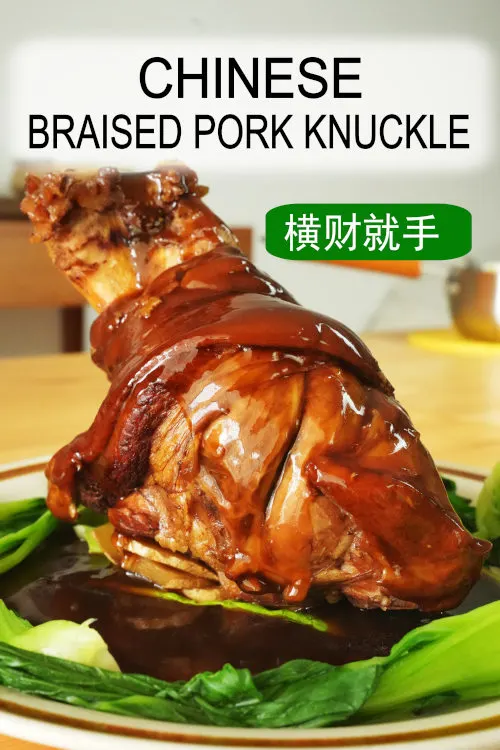
4. Braise the pork knuckle
Now let’s get into the actual braising process.
- Heat some vegetable oil in a pan.
- Saute the sliced ginger, sections of the spring onions (green onions), and a few cloves of garlic over low heat until they turn aromatic.
- Now transfer the aromatics into a stock pot.
- Place the pork knuckle into the pot. Then add enough hot water to submerge the pork knuckle.
- Add the bouquet garni of spices, rock sugar, Shaoxing wine, light soy sauce, and dark soy sauce.
- Bring the liquid to a boil over medium-high heat. Once it is boiling, reduce the heat to keep the braising liquid at a bare simmering temperature.
- Continue braising the pork knuckles with the lid on for another two hours. Alternatively, you can use a slow cooker to keep it at a steady low temperature. Slow cooking will slowly break down the connective tissue, a crucial method in producing soft and tender meat.
- Turn the pork knuckles occasionally in the process to ensure even cooking. The actual cooking time is when the pork is so tender that it can barely hold shape, and you can easily pull out the bone.
5. Make gravy for the pork knuckle
- Once the pork knuckle is tender and soft, remove it from the braising liquid.
- Pour the braising liquid through a wire mesh strainer to catch all the herbs and spices.
- Return the clean liquid to a pan or a small pot. Bring it to a boil again to reduce the amount until it becomes a thick gravy. (You may not require to use all the liquid).
- Line the serving plate with some Chinese lettuce. Place the pork knuckle at the center and drizzle the sauce on it.
- Now the Chinese-style braised pork knuckle is ready to serve.
Is there any difference between pork knuckle, pork hock, and ham hock?
Unlike the ham hock, which originates from the back ankle, the pig hock can come from either ankle. The term “pork hock” is commonly used to describe pig knuckle. Pork knuckles are a specialized cut from the knee joint of the foot, whereas pork trotters are the entire foot, including the ankle and bones.
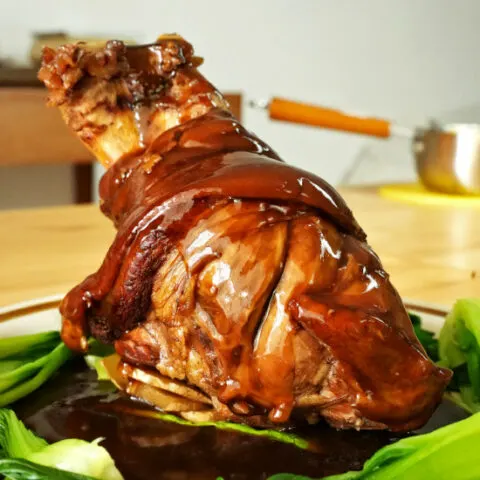
Chinese-style braised pork knuckle
This Chinese New Year pork knuckle dish is called 橫財就手 in Chinese. It represents prosperity and good luck for the coming year.
Ingredients
Ingredients A (blanch and fry the pork knuckle)
- 1 pork knuckle (about 1.2kg)
- 5 slices ginger
- 2 stalks spring onions, cut into 3-inch sections
- 1 tbsp rice wine
- 1 tbsp dark soy sauce
- 3 tbsp vegetable oil
Ingredients B (aromatics)
- 5 slices ginger
- 2 stalks spring onions
- 5 cloves garlic
Ingredients C (Spices in bouquet garni)
- 2 bay leaves
- 1 cinnamon stick
- 1 star anise
- 10 cloves
- 1 tsp Szechuan peppercorns
- 1 tsp fennel seeds
- 5 green cardamom pods
- 1 piece dried orange peel
- 1/4 tsp white peppercorns
- 1 dried chili
Ingredients D (seasonings)
- 2 tbsp light soy sauce
- 2 tsp dark soy sauce
- 2 tbsp rice wine
- 2 tbsp rock sugar
Ingredients E
- Cornstarch slurry to thicken the gravy
- 1 Chinese lettuce
- Sufficient oil to fry
- Enough water to braise the pork
Instructions
Blanch the pork knuckle
- Clean the pork knuckle with plenty of water.
- Remove any hair you spot with a tweezer or burn it with a blowtorch.
- Put the knuckle in a large pot and fill it with enough water to submerge it.
- Add the ginger, spring onion, and rice wine to the water.
- Bring the water to a boil. Then blanch the pork knuckles for about 5-7 minutes and turn it over occasionally.
- Remove it from the water and clean it again with running water.
Fry the pork knuckle before braising it
- Add a large tablespoon of dark soy sauce and rub it all over the surface.
- Fry the pork in hot oil. Close the lid to avoid splattering.
- Fry the pork knuckle on both sides until it is golden.
- Finally, remove it and drain away the oil.
Braise the pork knuckle
- Saute the sliced ginger, sections of the spring onions, and a few cloves of garlic with oil over low heat until they turn aromatic.
- Transfer the aromatics into a stock pot.
- Place the pork knuckle into the pot. Then add enough hot water to the pot to submerge the pork knuckle.
- Add the bouquet garni of spices, rock sugar, choosing wine, light soy sauce, and dark soy sauce.
- Once it is boiling, reduce the heat to keep the braising liquids at a bare simmering temperature for two hours.
Make gravy for the pork knuckle
- Remove the pork from the braising liquid.
- Pour the braising liquid through a wire mesh strainer to catch all the herbs and spices.
- Bring it to a boil again to reduce the amount until it becomes a thick gravy. Then, thicken it with cornstarch slurry.
- Now the pork knuckle is ready to serve.
Recommended Products
As an Amazon Associate and member of other affiliate programs, I earn from qualifying purchases.
-
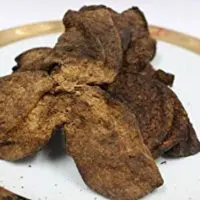 Chinese Cuisine Dried Aged Orange / Citrus Peel / Chen Pi 老年陳皮 Free Worldwide AIR Mail (100G)
Chinese Cuisine Dried Aged Orange / Citrus Peel / Chen Pi 老年陳皮 Free Worldwide AIR Mail (100G) -
 Butane Torch Kitchen Blow Lighter - Culinary Torches Chef Cooking Professional Adjustable Flame with Reverse Use for Creme, Brulee, BBQ, Baking, Jewelry by FunOwlet (Butane Fuel Not Included)
Butane Torch Kitchen Blow Lighter - Culinary Torches Chef Cooking Professional Adjustable Flame with Reverse Use for Creme, Brulee, BBQ, Baking, Jewelry by FunOwlet (Butane Fuel Not Included) -
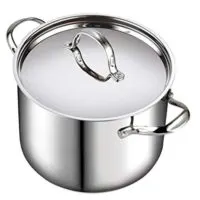 Cooks Standard 02520 Quart Classic Stainless Steel Stockpot with Lid, 12-QT, Silver
Cooks Standard 02520 Quart Classic Stainless Steel Stockpot with Lid, 12-QT, Silver -
 Regency Wraps 100% Cotton Drawstring Bag For Enclosing Bulk Spices, Tea, Potpourri and Jewelry, Natural, 3"x4" (Pack of 10)
Regency Wraps 100% Cotton Drawstring Bag For Enclosing Bulk Spices, Tea, Potpourri and Jewelry, Natural, 3"x4" (Pack of 10)
Nutrition Information:
Yield: 3 Serving Size: 1Amount Per Serving: Calories: 837Total Fat: 45gSaturated Fat: 9gTrans Fat: 0gUnsaturated Fat: 30gCholesterol: 75mgSodium: 2107mgCarbohydrates: 79gFiber: 10gSugar: 14gProtein: 32g
This data was provided and calculated by Nutritionix on 29/01/2023

Pauline
Tuesday 31st of January 2023
Sounds very delicious. I did try the Cantonese style last year. It turned out wonderfully. Of course I'm going to try this receipe too.May I ask, can I use Pressure cooker for braising? Pressure cooker always needs a much shorter time rather than 2 hours. Please advise. Thanks. I love your recipes very much.
KP Kwan
Friday 3rd of February 2023
I do not have a pressure cooker with me as I cooked it the traditional way. So perhaps I'm not in a position to provide the effect duration if you use the pressure cooker
KP Kwan
Monday 30th of January 2023
Hi, this is KP Kwan. I am happy to see you in this comment area, as you have read through my recipe. I am glad to reply to any questions and comments as soon as possible.